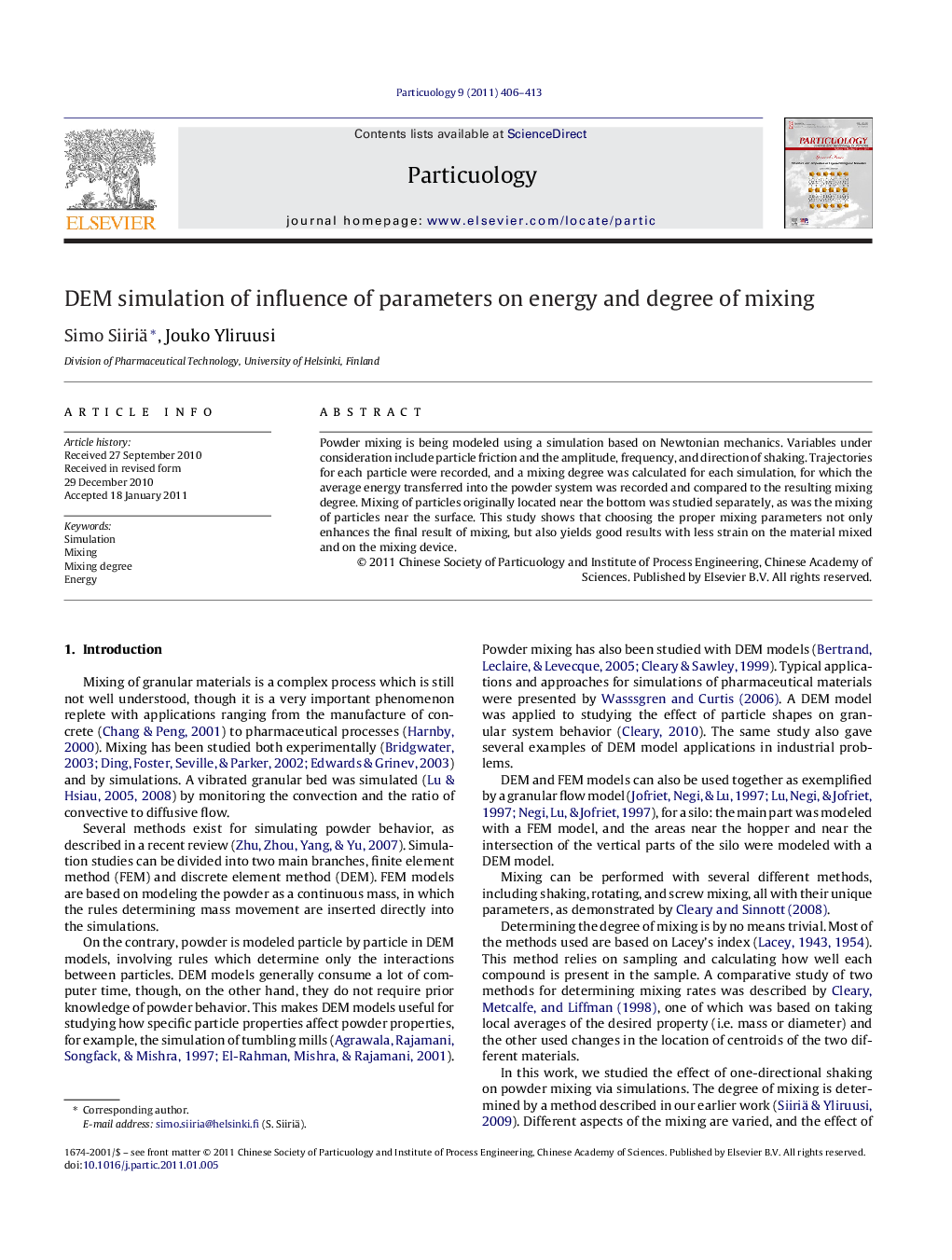| Article ID | Journal | Published Year | Pages | File Type |
|---|---|---|---|---|
| 672417 | Particuology | 2011 | 8 Pages |
Powder mixing is being modeled using a simulation based on Newtonian mechanics. Variables under consideration include particle friction and the amplitude, frequency, and direction of shaking. Trajectories for each particle were recorded, and a mixing degree was calculated for each simulation, for which the average energy transferred into the powder system was recorded and compared to the resulting mixing degree. Mixing of particles originally located near the bottom was studied separately, as was the mixing of particles near the surface. This study shows that choosing the proper mixing parameters not only enhances the final result of mixing, but also yields good results with less strain on the material mixed and on the mixing device.
Graphical abstractIn simulations the degree of mixing was analyzed and compared to the energy transferred into the powder system, indicating that the mixing degree would remain high even if the kinetic energy and average trajectory for the particles were small, provided amplitude, frequency, and vibration speed were correctly chosen.Figure optionsDownload full-size imageDownload as PowerPoint slide
